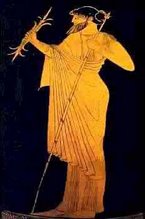
Notgeld is German for "Emergency Money".
During the early 20th century special money was issued in several countries, but primarily Germany and Austria to cater for economic crisis situations. There was a shortage of small change, due to the war efforts and the need for metal going that way rather than for coinage. This emergency money was not issued by the central bank (Reichsbank), but by various other institutions, e.g. town savings banks, municipalities, private and state-owned firms. It was therefore not a legal tender but rather a mutually accepted means of payment, in particular location or site.
Notgeld was mainly issued in the form of (paper) banknotes. Sometimes other forms were used, as well: coins, leather, silk, linen, stamps, aluminium foil, coal and all sorts of re-used paper and carton material (e.g. playing cards).
During the early 20th century special money was issued in several countries, but primarily Germany and Austria to cater for economic crisis situations. There was a shortage of small change, due to the war efforts and the need for metal going that way rather than for coinage. This emergency money was not issued by the central bank (Reichsbank), but by various other institutions, e.g. town savings banks, municipalities, private and state-owned firms. It was therefore not a legal tender but rather a mutually accepted means of payment, in particular location or site.
Notgeld was mainly issued in the form of (paper) banknotes. Sometimes other forms were used, as well: coins, leather, silk, linen, stamps, aluminium foil, coal and all sorts of re-used paper and carton material (e.g. playing cards).
The first large issue of Notgeld started during World War I. Due to the Inflation - caused by the cost of the war - the value of the material that a coin was minted from was higher than its denomination. Many institutions started to hoard coins. Additionally the metals used to mint coins were needed for the production of war supplies. This caused a massive shortage, which was remedied by issuing banknotes in small denominations.
As these banknotes were very colorful, they soon became a target for collectors. As the issuing bodies realised this demand they continued to issue these notes beyond their economic necessity up till 1922.
As these banknotes were very colorful, they soon became a target for collectors. As the issuing bodies realised this demand they continued to issue these notes beyond their economic necessity up till 1922.
In 1922 inflation started to get out of control. Until 1923 the value of the mark deteriorated faster and faster. New money in higher denominations was issued constantly. The central bank could not cope with the logistics of the necessary supply of money and Notgeld (Papiermark) was issued again - this time in denominations of thousands, millions and billions of mark.
Photo and text courtesy of Wikipedia

No comments:
Post a Comment